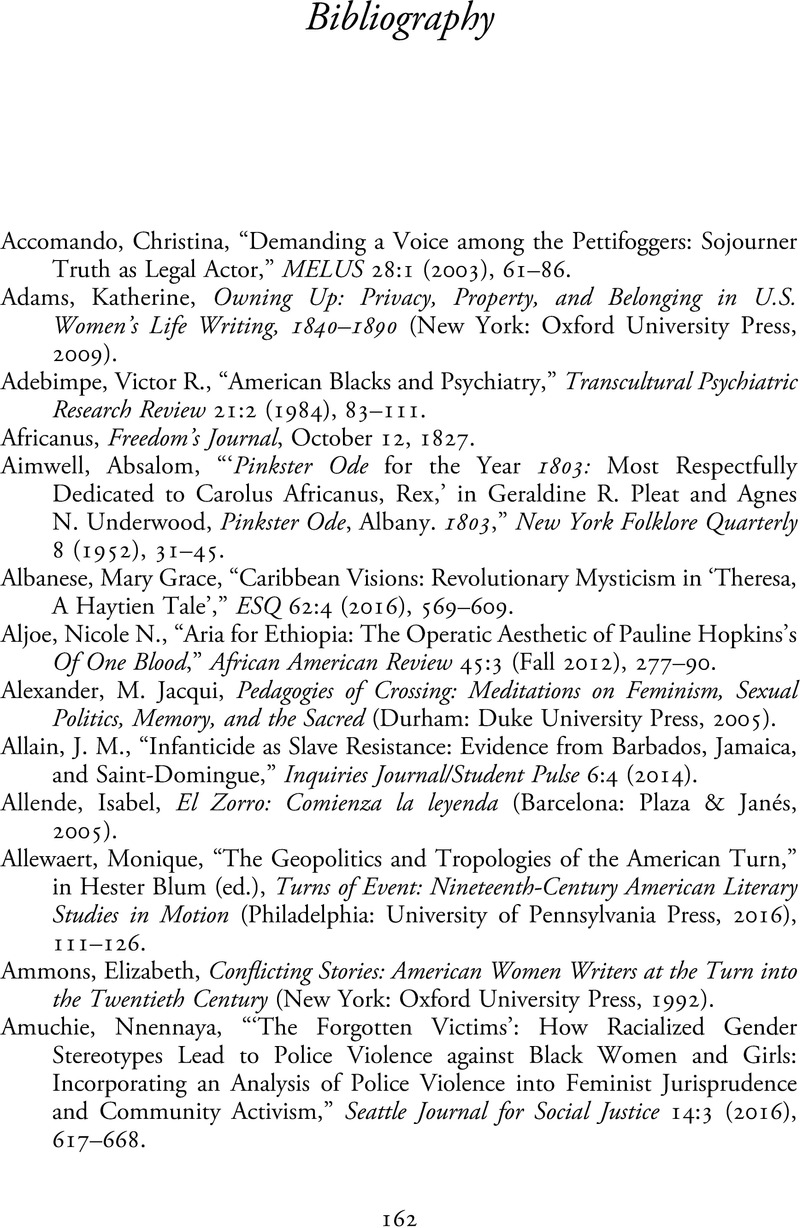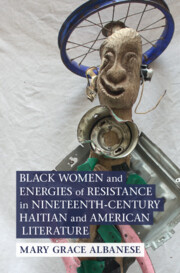Book contents
- Black Women and Energies of Resistance in Nineteenth-Century Haitian and American Literature
- Cambridge Studies in American Literature and Culture
- Black Women and Energies of Resistance in Nineteenth-Century Haitian and American Literature
- Copyright page
- Contents
- Figures
- Acknowledgments
- Introduction
- Chapter 1 Powering the Soul
- Chapter 2 Marie Laveau’s Generational Arts
- Chapter 3 Freedom’s Conduit
- Chapter 4 “A Wandering Maniac”
- Chapter 5 Mesmeric Revolution
- Coda
- Bibliography
- Index
- Recent books in this series (continued from page )
- References
Bibliography
Published online by Cambridge University Press: 09 November 2023
- Black Women and Energies of Resistance in Nineteenth-Century Haitian and American Literature
- Cambridge Studies in American Literature and Culture
- Black Women and Energies of Resistance in Nineteenth-Century Haitian and American Literature
- Copyright page
- Contents
- Figures
- Acknowledgments
- Introduction
- Chapter 1 Powering the Soul
- Chapter 2 Marie Laveau’s Generational Arts
- Chapter 3 Freedom’s Conduit
- Chapter 4 “A Wandering Maniac”
- Chapter 5 Mesmeric Revolution
- Coda
- Bibliography
- Index
- Recent books in this series (continued from page )
- References
Summary

- Type
- Chapter
- Information
- Black Women and Energies of Resistance in Nineteenth-Century Haitian and American Literature , pp. 162 - 189Publisher: Cambridge University PressPrint publication year: 2023

